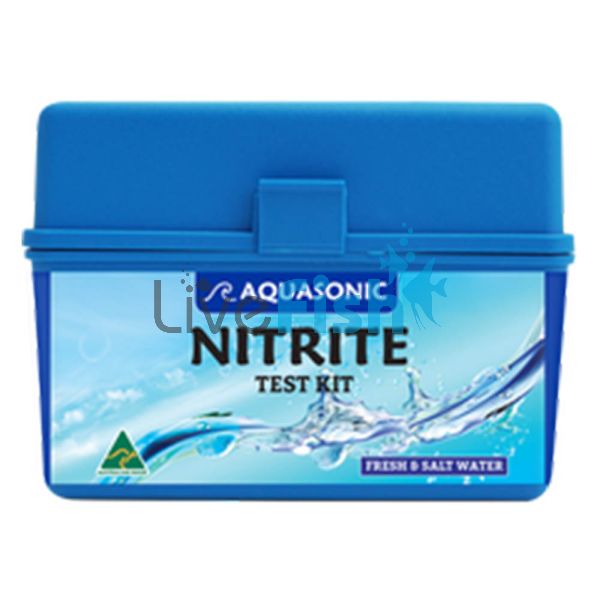Aquasonic Nitrite Test Kit
In all aquarium systems, biological activity develops in your filter and on the surface of gravels, decorations, etc. These bacteria are essential to achieve a balance in your aquarium and different types of bacteria need to be present in the right proportions to break down waste and deal with ammonia, nitrite, and nitrate, which can all be harmful to your fish. Every time you change or add something to your tank or you clean it, you potentially upset the balance because you are effectively removing some of these bacteria.
NITRITE TEST KIT
In all aquarium systems, biological activity develops in your filter and on the surface of gravels, decorations, etc. These bacteria are essential to achieve a balance in your aquarium and different types of bacteria need to be present in the right proportions to break down waste and deal with ammonia, nitrite, and nitrate, which can all be harmful to your fish. Every time you change or add something to your tank or you clean it, you potentially upset the balance because you are effectively removing some of these bacteria.
The replacement of plants and coral or cleaning of filters, gravel, or substrate, even in part, can also cause a NITRITE condition to re-occur, even in well-established aquariums. Complete sterilization during the cleaning of an aquarium will also result in a NITRITE condition because you have removed bacteria in the sterilization process. NITRITE is toxic to fish, even in quantities as small as 1ppm. If you are starting a new aquarium, it is recommended that you don’t put new fish into the system until a NITRITE reading of less than 1ppm is achieved (ideally zero).
RECURRING NITRITE CONDITION
The biological activity in a filter may take as long as three months to develop fully, and in this time, due to increases in the number of fish, the NITRITE condition may re-occur. Evidence has shown, by lowering the pH to 7.5, the toxicity of NITRITE is minimized. If a system does develop nitrite continually after it is fully conditioned, it may mean that the surface area of the biological filter is undersized, or the number of fish in the tank is too great.
ASSISTING BIOLOGICAL ESTABLISHMENT
To assist, ensure the temperature is steady, at or above 26 degrees C, and check the flow of water through the filters is well distributed and sufficient, and oxygen levels are adequate. When cleaning your filter media, use cold or lukewarm water only as hot water will kill the bacteria.
TO BREAK THE AMMONIA->NITRITE->NITRATE CYCLE:
- Perform a water change.
- Remove anything that can cause ammonia to form (e.g., dead organic matter or excess fish waste) from amongst the substrate (e.g., gravel cleaner)
- Use Aquasonic AMMO-GONE to neutralize the ammonia in the system
The manual addition of live strains of nitrifying bacteria can also aid in kick-starting the biological activity in the filter system.
DIRECTIONS FOR USE:
- Rinse the clean test tube and cap it several times in the water to be tested.
- Fill the test tube to the 5ml mark with the water to be tested.
- Add 3 drops of Nitrite Reagent A
- Add 3 drops of Nitrite Reagent B - Cap the test tube and invert twice
- Wait a minimum of 2 minutes, but no longer than 3 minutes, to compare the test with the colour chart.
After this time the test will continue to colour, but the further colouration is irrelevant. Place the test tube on the white background of the colour chart and view it vertically down the tube. The colour in the test tube is best viewed with natural light behind you. After completion of the test, wash the test tube carefully as a previous test could influence the next one.
*This colour chart provides a basic guide only. Colours may vary according to the various water conditions.
SAFETY DIRECTIONS
- Keep out of reach of children.
- Reagents in this test kit could be harmful if swallowed.
- Avoid contact with the skin. If contact does occur, wash with soap and water. To avoid soap contamination with aquaria, rinse your hands thoroughly.
| Scientific Name | Test Kit |
|---|




